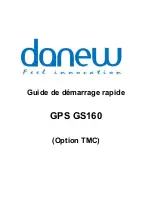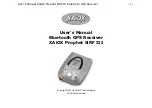
1.6.3 Shielding
If
employing
the
countermeasures
listed
in
Section 1.6.2
cannot
solve
EMI
problems,
the
solution
may
be
shielding
of
the
noise
source.
In
the
real
world,
shields
are
not
perfect.
The
shielding
effectiveness
you
can
expect
from
a
solid
metal
shield
is
somewhere
in
the
order
of
30-40
dB.
If
a
thin
PCB
copper
layer
is
used
as
a
shield,
these
values
can
be
even
lower.
Perforation
of
the
shield
will
also
lower
its
effectiveness.
Be
aware
of
the
negative
effects
that
holes
in
the
shield
can
have
on
shielding
effectiveness.
Lengthy
slots
might
even
turn
a
shield
into
a
radiating
slot
antenna.
Therefore,
a
proper
shield
has
to
be
tightly
closed
and
very
well
connected
to
the
circuit
board.
1.6.3.1
Feed through Capacitors
The
basic
concept
of
shielding
is
that
a
metal
box
will
terminate
all
electrical
fields
on
its
surface.
In
practice
we
have
the
problem
that
we
need
to
route
some
signals
from
inside
to
outside
of
this
box.
Signal Layers
Supply Ground Layer (noisy)
Shield (free of supply currents)
Signal line leaving box
Feed through Capacitor
Figure 19: Ideal shielding
The
proposed
setup
for
such
a
system
is
shown
in
Figure
19.
A
feed
through
capacitor
removes
all
high
frequency
content
from
the
outgoing
signal
line.
It’s
important
to
note
that
any
conductor
projecting
through
the
shielding
box
is
subject
to
picking
up
noise
inside
and
re-radiating
it
outside,
regardless
of
the
actual
signal
it
is
intended
to
carry.
Therefore,
also
DC
lines
(e.g.
the
power
supply)
should
be
filtered
with
feed
through
capacitors.
When
selecting
feed
through
capacitors,
it’s
important
to
choose
components
with
appropriate
frequency
behavior.
As
with
the
ordinary
capacitors,
small
value
types
will
show
better
attenuationat
high
frequencies
(see
Figure
20).
For
the
GPS
frequency
band
the
470pF
capacitor
is
the
optimum
choice
of
the
Murata
NFM21C
series.
GPS
Modules
-
System
Integration
Manual
(SIM)
(incl.
Reference
Design)
GPS
Fundamentals
GPS.G4-MS4-05007-A1
Page 26















































